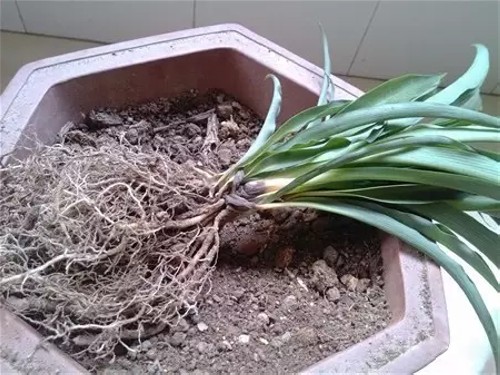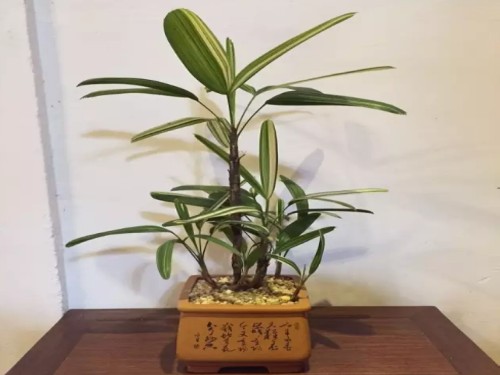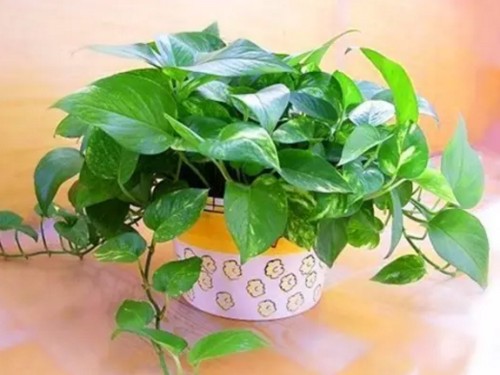Why do potted orchids rot? What about the rotten roots of hanging orchids?
Cymbidium is fleshy root, soil culture, water culture are very beautiful, but once the rotten root that can be "chaos", the whole plant roots absorb nutrients, root unhealthy plants will also infect diseases and insect pests. The rotting root of Cymbidium is mainly caused by root injury or waterlogging and excessive fertilization. Change, divide the basin must be as little as possible to hurt the root, and to dry after a day on the basin, and to control the amount of water, do not do not pour in order to avoid root rot. Long-term watering coupled with the impervious basin soil will also have this symptom. What should I do about the rotten roots of orchids in soil culture? The editor has collected and sorted out several ways to deal with rotten roots to share with you!

How to deal with the rotten roots of hanging orchids? First of all, it is necessary to dig up the orchid, cut off the rotten roots, and disinfect them with potassium permanganate solution. If there is no potassium permanganate, carbendazim is OK. If there is nothing on hand, clean up the rotten roots and put them in a ventilated place to dry. Do not bask in the sun, just dry in a cool place, and then replant it with new soil. When it comes to replanting, because Cymbidium is a very easy plant to raise, if you have pure sand on hand, you can raise it with pure sand first. after my test, the pure sand can take root quickly!
1. Shuida
Reason:
Hanging orchid, like water, but also the most taboo water, too much watering, the root for a long time soaked in anoxic environment, over time, the root system will blacken and rot.
Solution:
Reduce watering, bask in the sun more, strengthen ventilation, and let the moisture in the soil evaporate as soon as possible. Several holes can be made around the root of the orchid to increase air permeability. If there is too much watering, it is recommended to remove the basin directly, dry the soil or change the new soil.
If it is found that it is not timely and the rotting roots of Cymbidium are serious, it is recommended to remove the plant from the pot, trim the rotten roots, soak them in disinfectant for a while, dry them for 2 or 3 days, and then plant them with new soil.
2. Fat weight
Reason:
Whether fertilizing too much orchid itself will have a sense, frequent fertilization or fertilization is too thick, it is easy to burn roots.
Solution:
If the concentration of fertilizer is too high, water should be watered immediately to let water flow out from the bottom of the basin. Or, remove the plant from the pot and change the soil. In addition, timely check the root rot, trim the root, disinfect the slow root.
3. Soil clay
Reason:
If the soil is not changed for a long time, there will be the problem of soil consolidation, and the soil viscosity is heavy, which is not conducive to the growth of roots.
Solution:
This is the simplest and most direct way to change soil. For soil hardening is not very serious, you can mix perlite into the soil to ease it. The more serious consolidation can be replaced with loose and fertile soil.
4. Injure the root
Reason:
The root injury may be an instant thing, when you change the basin, one will appear carelessly, scratch the skin, break the root, and there will be no problem in a short time. But in the soil environment, the roots with wounds will slowly rot.
Solution:
Try to avoid damage to the root system, in the process of basin change, root trimming, we should pay attention to handle it gently.
Within 1 ~ 2 months after root injury, the root system will gradually rot if it can not be recovered. After changing the basin, we should pay attention to check the growth of Cymbidium, and deal with any abnormality in time. If the root is completely rotten, the hope of regeneration is a little slim, but a timely transplant can be saved. Cut off the small plant on the stem of the plant, plant it directly in the culture soil or water, and wait for it to take root.
5. Diseases and insect pests
Reason:
Diseases and insect pests are an unavoidable problem for many plants. When bacteria, fungi and even root-knot nematodes are found in the soil, the root is of course the first to bear the brunt. Worms eat the roots and then cause decay.
Solution:
If the rotten root is light, the pot soil can be irrigated with 400-500 times carbendazim solution for sterilization and disinfection. Use it once a week for three weeks to remove the yellow leaves. If the rotten root is serious, dig it out, cut it off, disinfect it with potassium permanganate solution, and dry it in a ventilated place, about 1 day or 2 days, and replant it.
Time: 2019-06-01 Click:
- Prev

What about the bugs growing on bonsai?
Spring is a frequent period of flower diseases and insect pests, common diseases and insect pests are: aphids, shell insects, red spiders, blight, rust, powdery mildew and so on. So how do you get rid of those hateful bugs? First of all, let's learn about the following common insect pests.
- Next

What's going on with the rotten root of green apple?
Green pineapple is called the best plant by flower friends. When it comes to hydroponic flowers, you may immediately think of green pineapple, because green pineapple can be cultivated not only in soil, but also in hydroponics. Green pineapple has always been called the best plant by flower friends, but there are also flower friends who encounter the situation of rotten roots of green pineapple. What about the rotten roots of green pineapple?
Related
- Fuxing push coffee new agricultural production and marketing class: lack of small-scale processing plants
- Jujube rice field leisure farm deep ploughing Yilan for five years to create a space for organic food and play
- Nongyu Farm-A trial of organic papaya for brave women with advanced technology
- Four points for attention in the prevention and control of diseases and insect pests of edible fungi
- How to add nutrient solution to Edible Fungi
- Is there any good way to control edible fungus mites?
- Open Inoculation Technology of Edible Fungi
- Is there any clever way to use fertilizer for edible fungus in winter?
- What agents are used to kill the pathogens of edible fungi in the mushroom shed?
- Rapid drying of Edible Fungi

